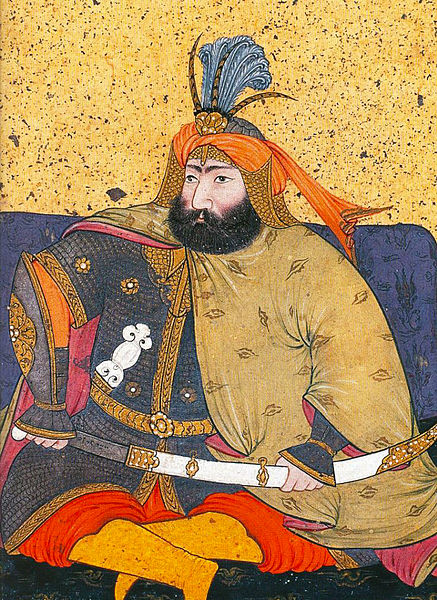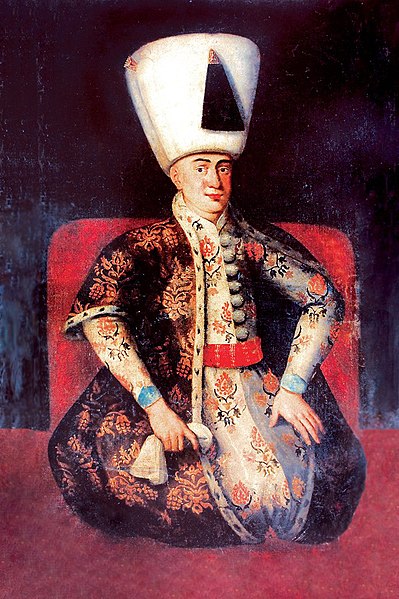Murad IV was the sultan of the Ottoman Empire from 1623 to 1640, known both for restoring the authority of the state and for the brutality of his methods. Murad IV was born in Constantinople, the son of Sultan Ahmed I and Kösem Sultan. He was brought to power by a palace conspiracy when he was just 11 years old, and he succeeded his uncle Mustafa I. Until he assumed absolute power on 18 May 1632, the empire was ruled by his mother, Kösem Sultan, as nāʾib-i salṭanat (regent). His reign is most notable for the Ottoman–Safavid War, of which the outcome would partition the Caucasus between the two Imperial powers for around two centuries, while it also roughly laid the foundation for the current Turkey–Iran–Iraq borders.
Murad by Abdulcelil Levni
Murad IV in his young age
Ottoman miniature painting depicting Murad IV during dinner
Murad IV
Ahmed I was the sultan of the Ottoman Empire from 1603 to 1617. Ahmed's reign is noteworthy for marking the first breach in the Ottoman tradition of royal fratricide; henceforth, Ottoman rulers would no longer systematically execute their brothers upon accession to the throne. He is also well known for his construction of the Blue Mosque, one of the most famous mosques in Turkey.
Anonymous portrait of Ahmed I
Ottoman miniature of Ahmed I.
Bilingual Franco-Turkish translation of the 1604 Franco-Ottoman Capitulations between Ahmed I and Henry IV of France, published by François Savary de Brèves in 1615
Ahmed I plate at Masjid al-Nabawi marking Bab al-Tawba








